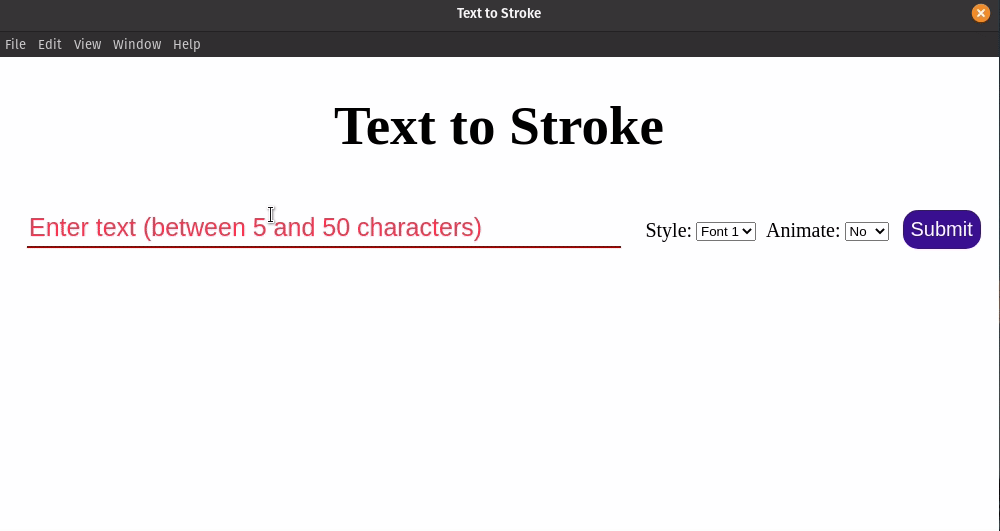An online handwriting synthesizer based on Alex Graves paper - Generating Sequences With Recurrent Neural Networks. GUI built in electron.js
An attempt to implement handwriting synthesis basing the paper ‘Generating Sequences with Recurrent Neural Networks‘ by Alex Graves. GUI is built with electron.js.

Python libraries required:
numpy==1.19.5matplotlib==3.2.2torch==1.7.1
npm dependencies:
electron.js
Prerequisites : A working installation of python3 and npm.
After cloning repo, install python packages using pip install -r requirements.txt (virtual environment recommended)
And similarly install node-modules using npm install
Download IAM On-Line Handwriting Database. Place the extracted folder original-xml-part under text-2-strokes/data/.
python extract_data.py
This scipt searches original-xml-part directory for xml files with handwriting data > converts coordinates to offsets > saves the output as ./data/strokes.npy and ./data/sentences.txt.
python train.py --n_epochs 100 --model synthesis --batch_size 32 --text_req
A number of arguments can be set for training if you wish to experiment with the parameters. The default values are in train.py
--hidden_size #hidden states for LSTM layer--n_layers #LSTM layer--batch_size size of training batch--step_size step size for learning rate decay--n_epochs #Training epochs--lr learning rate--patience patience for early stopping--model_type train model type--data_path path to processed training data--save_path path where training weights are stored--text_req flag indicating to fetch text data also--data_aug flag to whether data augmentation required--seed random seed
python generate.py --char_seq "input text for handwriting synthesis" --save_img --style 4
Similarly a number of arguments can be set for generation also, if you wish to experiment with the parameters. The default values are in generate.py
--model type of model--model_path path to trained weights--save_path output path--seq_len length of input sequence--bias bias term--char_seq input text--text_req flag indicating to fetch text data also--seed random seed--data_path path to processed training data--style style number [0,4]--save_img save output as .png--save_gif save output as .gif
npm start
python generate.py --char_seq "A sample of generated text" --save_gif --style 1

python generate.py --char_seq "I am Rahul" --save_gif --style 4

[1] Alex Graves, Generating Sequences With Recurrent Neural Networks, 2014
[2] IAM On-Line Handwriting Database, Universität Bern, 2005
[3] Swechha Choudhary’s implemetation of the paper
[4] Grzegorz Opoka’s implementation of the paper
Any feedback is much appreciated 